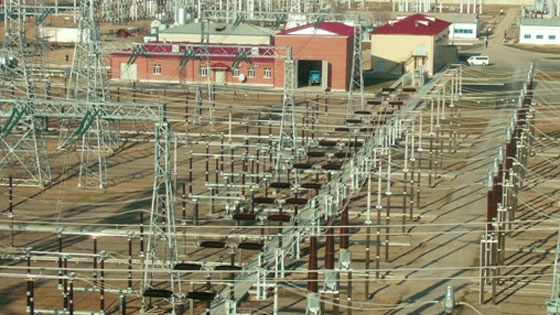Fixing the System
Strong economic growth has led to a sharp increase in the demand for electricity in Kazakhstan. Much of the country's power generation comes from the north, from power plants located in the coal-producing regions of Ekibastuz and nearby hydroelectric facilities. Power sources in the south were generally small-scale; limited to small hydro, combined heat and power plants, and a high cost oil-fired power plant in Taraz.
The new line will ease the strain on the households and business of the south, says Kanat Bozumbayev, the governor of the Zhambyl oblast. "The transit commissioning will ensure power demands for implementation of anti-crisis programs in the southern region of the country," he says. "The Partnership with the World Bank allowed us to gain unique experience of cooperation to ensure better services to the people of the south region."
Integrating the Region
At the same time, the project will help further regional integration by promoting trade in Central Asia, creating an "energy bridge" via Kazakhstan between Russia and Central Asia. It has also sparked greater competition by allowing low cost energy generators to vie for customers in the south of the country. Competition, of course, brings down energy costs for consumers while improving the quality of electricity services.
The construction of the north-south line is a long-standing dream of Kazakhstani power engineers. They called it the "life line" of Kazakh economy. Indeed, the Bank-supported second north-south power line provides vital steady power to the booming south of the country.
"The building of the North-South line was critically important to sustaining growth in the southern part of the country over the next decades," says Mirlan Aldayarov, who led the World Bank's engagement in the project. "It also became a key to unlocking opportunities for the development of the regional power trade between Kazakhstan and its northern and southern neighbors."
Providing Electricity and Jobs
The actual construction of the line also helped people of Kazakhstan benefit from new jobs. Several Kazakhstani companies were involved in the work providing about 1000 new jobs. Much of the material and equipment came from local contractors, who provided reinforced concrete structures and wiring, among other things.
Kazakh builders and engineers also learned from the project, bringing cutting-edge technology to the country. They installed and learned to use new technology, ranging from polymeric insulation to fiber-optic communication lines.
Reliable Electricity
Electricity is essential for a modern economy. The new north-south electricity line is an important step in strengthening the electricity system for sustainable development across Kazakhstan.
